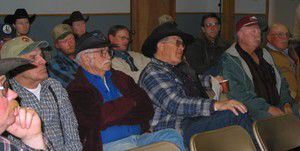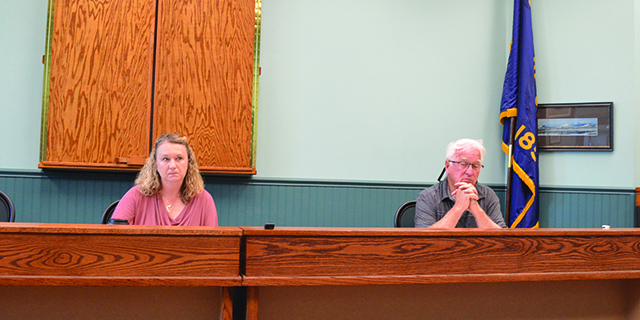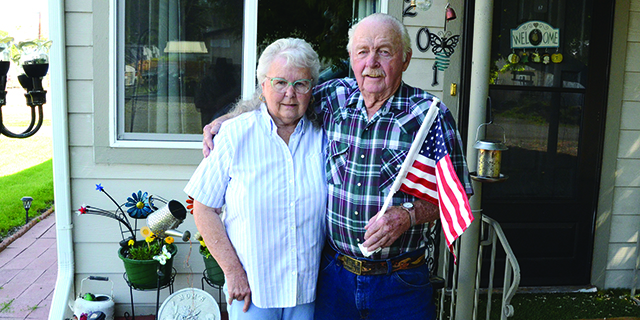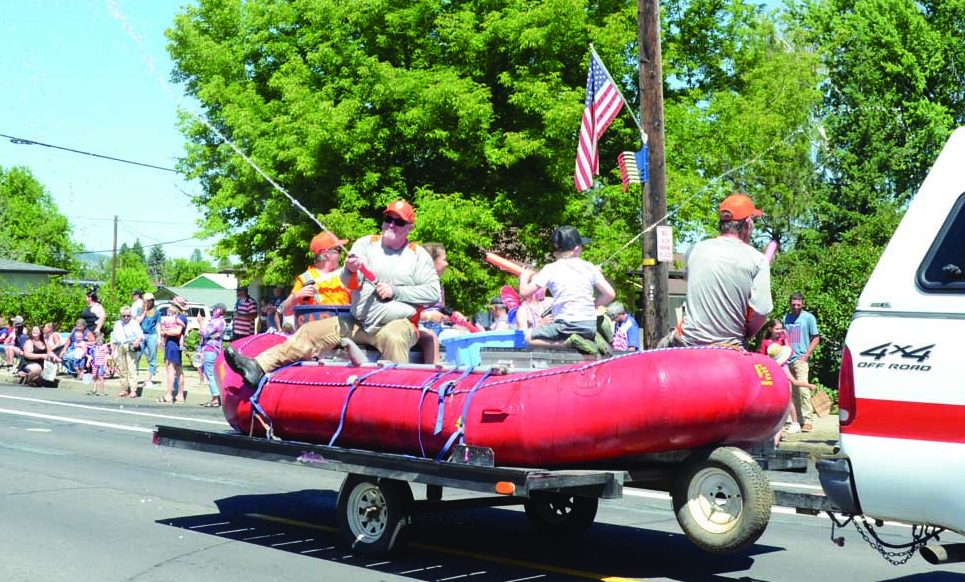Elk causing problems on Zumwalt Prairie
Published 4:00 pm Wednesday, February 25, 2004

- Approximately 25 landowners and others showed up to discuss the problem of damage caused by a large herd of elk which has taken up residency on the Zumwalt Prairie. Photo by Elane Dickenson
An elk population which is struggling in most parts of Wallowa County is thriving on the Zumwalt Prairie. In fact a herd of several hundred head of elk has set up permanent residency and is causing damage to range on private property, according to rancher Doug Tippett who called a meeting of Zumwalt area landowners at Cloverleaf Hall Monday night.
“They are eating me out of house and home,” said Tippett, who outlined the history of elk problems in the Zumwalt area dating back to the 1970s.
At that time the problem hit a peak in 1977 when, during a dry year, 1,000 elk were counted between Pine Creek Rd. and the timber. At that time he said the Oregon Department of Fish and Wildlife helped solve the problem with such efforts as hazing the animals and putting out up to 100 cow tags.
He said that such factors as mild winters and cougar predation problems in the forested part of the Chesnimnus hunting unit has resulted in a dramatic increase on the Zumwalt in recent years. Tippett noted that in the past the elk would winter on the Snake but in recent years “they’ve become a resident herd,” he said.
Tippett took some aerial photos last week of an elk herd numbering about 400 wintering on Nature Preserve property, and said that as soon as the spring grass starts to come up on his range the herd will be on his and other range property, eating the new grass and trampling its root system in the process. “They do a tremendous amount of damage. They just pulverize it,” Tippett said.
He said while in the past he summered some 300 head of cows on his Zumwalt range, last year he had to take them off over a month early, and this year he was expecting to turn out only 100 head because of the elk damage.
Tippett pointed to the fact that many Zumwalt landowners have closed their land to cow hunters as one part of the problem
Helping Tippett chair Monday night’s meeting, which drew about 25 landowners and others interested in the elk issue, was ODFW biologist Vic Coggins, who confirmed that the calf survival rate is about twice as high on the privately-owned Zumwalt part of the Chesnimnus unit as in the forested part, which is mostly U.S. National Forest land. The overall survival rate is 18 per 100 cows, compared to about 40 per hundred on Zumwalt.
“We have a problem of distribution,” said Coggins, who said in the past about 25 percent of the Chesnimnus elk could be found on the Zumwalt and now it is 50 percent, and overall the number of elk in Chesnimnus is below management levels. He said that the change in elk patterns has been visible through aerial surveys, with a lot less elk counted on ridges and in the north country. “On the prairie they can see better and feel more secure,” he said.
Coggins noted that the problem is not bull elk, but the number of cows, but said the number of cow tags for the area has been reduced to about 25 because there is so little private land that hunters are allowed on that it has been futile to grant more tags.
He said that hazing could once again be initiated and paid for through the Access and Habitat program, but some lead time is needed for the application and three different reviews required to be approved.
Tippett said that in the past he’s gone so far as to come into town to try to recruit hunters with cow tags onto his land.
One landowner pointed to as being closed to hunting except for owners’ preference tags was Nature Conservancy, represented by Phil Shepherd at the meeting, though Coggins pointed out the property was even more closed under the previous landowner.
The property of Dr. Gene Goertzen was mentioned as one large tract that has been closed to outside hunters. A ranch employee, Doug Beck, thought that though Dr. Goertzen had been unable to attend the meeting, he indicated a change in attitude towards the elk population. Beck said that in the past Goertzen wouldn’t let anyone but employees hunt the ranch, but is having second thoughts. “The first few years he liked to see the elk, but is ready to admit there is a problem,” said Beck.
A number of issues related to the Zumwalt elk situation was discussed, from the need for better habitat management and predator control on the forest to the need for cooperation among the Zumwalt landowners themselves.
Coggins said that the two solutions, at least in the short run, he sees are initiating hazing again when the elk are causing property damage and increasing the number of cow elk tags. During the discussion he also noted that each of the five bull elk tags allowed for landowners can be traded two-for-one for cow tags.
Coggins said that if he pushes for more cow tags, however, there will have to be more private land open to hunters.
A number of ranchers indicated they might be willing to allow cow hunters after elk season, but were hesitant to just “open the gates” to anyone. Coggins suggested compiling a list with phone numbers of those who might allow cow hunters to help solve the Zumwalt elk problem. A few of the landowners signed up at the meeting.
Mac Birkmaier joked that the last time he complained about elk on his place Coggins had given his number out to just about every hunter that came along. He indicated he might participate “but I don’t want 50 phone calls.” In a more serious note, Birkmaier noted, “There’s no quick fix.”
Tippett suggested that everyone go home “and mull this over.” While Coggins said it was too late to get a hazer for this spring, he told Tippett and others “if you get a bunch of elk out there causing damage, give us a call and let us know.”






